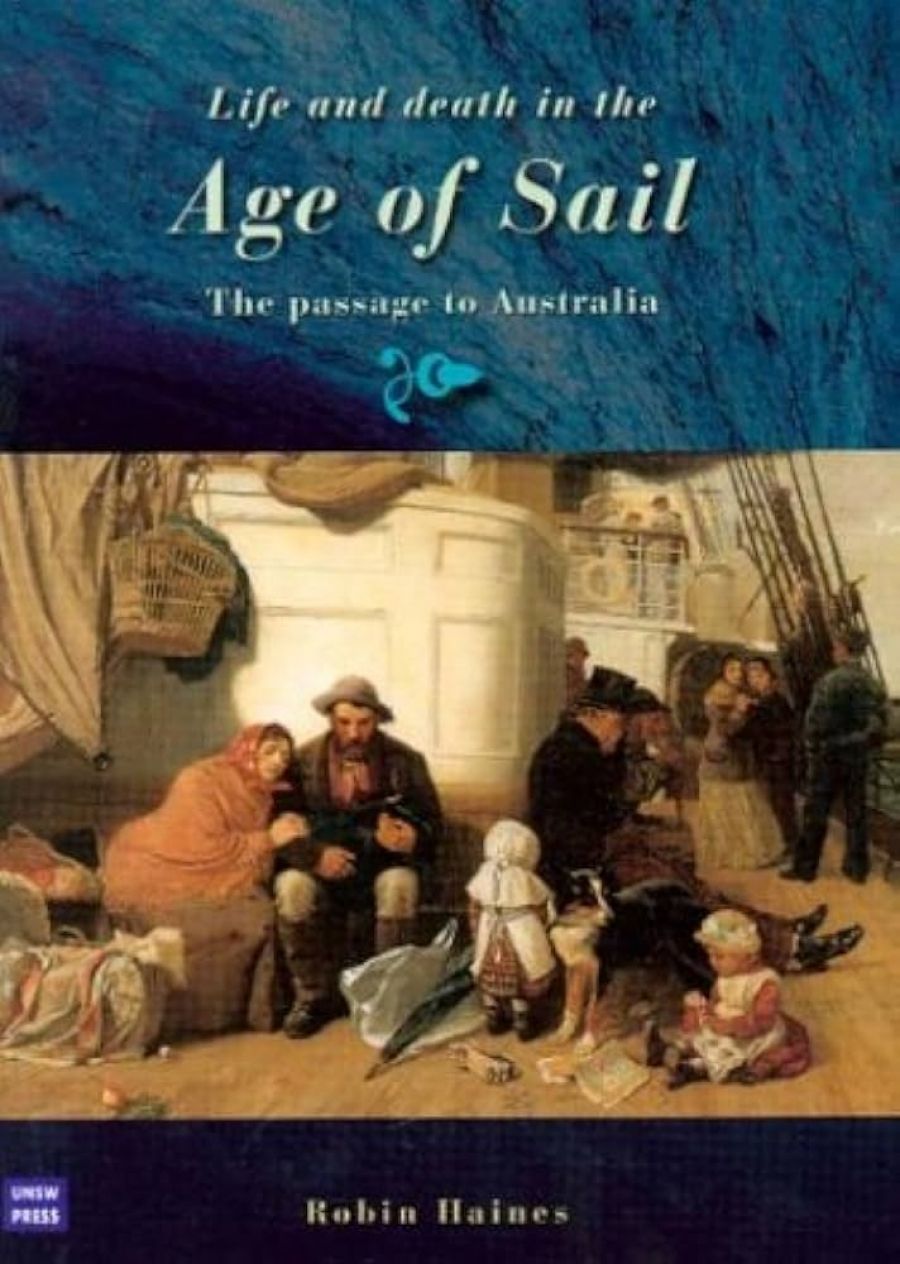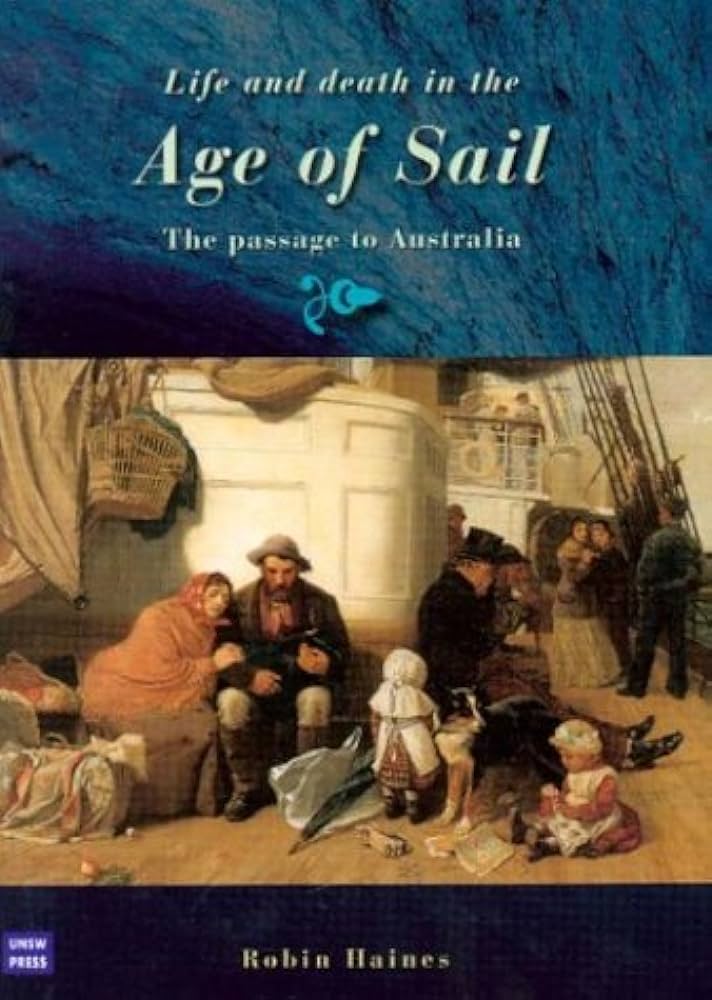
- Free Article: No
- Contents Category: History
- Custom Article Title: The Voyage Out
- Review Article: Yes
- Article Title: The Voyage Out
- Online Only: No
- Custom Highlight Text:
The Age of Sail might be presumed to cover several centuries, beginning, say, as far back as the great age of European exploration in the fifteenth and sixteenth centuries, and continuing until wind-powered sea travel was gradually replaced, in the late nineteenth century, by steamships.
The euphonious title of Robin Haines’s book is therefore a little misleading. She deals only with British assisted emigrants to Australia in the nineteenth century, putting their personal accounts into historical and statistical context, or rather, fleshing out the statistics with the human stories from which they are extrapolated. These emigrants are working-class people for the most part, ambitious and, of course, self-selected by their literacy, with social networks strong enough to encourage them to write their shipboard letters or diaries to keep in touch with those they had left behind in Britain. They are also, as Haines points out, self-selected for success in the new colonies, since the successful were the most likely to have descendants who would preserve the diaries and letters of their fortunate ancestors.
- Book 1 Title: Life and Death in the Age of Sail
- Book 1 Subtitle: The passage to Australia
- Book 1 Biblio: UNSW Press, 365pp, $49.95 hb
- Book 1 Cover Small (400 x 600):

- Book 1 Cover (800 x 1200):

Attitudes to deaths on board are not what one might expect. Young children were the most vulnerable and, therefore, though their deaths were mourned by their parents and regretted by others, they were not considered unusual. As Haines says, ‘Parents (on land and sea) did not take their infants’ survival for granted … Mothers understood that their infants’ lives hung by the thread of fate, and usually prefaced their remarks … with “if it survives”.’ She points out that the value placed on infant life was quite different in this era: ‘As late as the 1890s, parents or carers who neglected, harmed or killed infants were often dealt with far more leniently in the courts than poachers and petty thieves.’ In contrast, the ‘Gloom cast over the Ship’ when a sailor fell overboard and drowned on a voyage in the 1860s was greater, and lasted longer, than the sorrow felt by unrelated adults on the death of any child.
Although Haines says in her preface, ‘I have not made any attempt … to follow them after initial settlement’ in Australia, she has included later correspondence home from some of her emigrants. She devotes five pages to William Wingate’s letters home to his brother Joseph, trying to persuade him to follow him to South Australia where ‘we have every thing heart can witch [sic] for’. These digressions are among the most engaging passages, giving a vivid idea of early life in the colonies. Often, by contrast, Haines’s quantitative assessment of the success of emigrant’s subsequent lives, gauged by longevity and number of surviving children, seems dry and superficial.
The structure of Life and Death in the Age of Sail is a little unimaginative. The introductory chapters, setting out the context for the accounts to follow, are repetitive, wordy and sometimes dull. The writing is clouded with overuse of official-ese – why use ‘adult male’ instead of ‘man’, or ‘no person’ instead of ‘no one’, for example? Too many sentences start with ‘As well’, never a good choice. Amid the pedestrian phrases, the occasional flashes of elegance seem almost out of place: ‘a typical blend of lament and eager anticipation’ aptly describes one woman’s letters home. There is also a slightly odd effect when mortality statistics are presented dispassionately, but a stray adverb like ‘sadly’ or ‘tragically’ is inserted to remind us of the appropriate sentiments.
The scholarship is impeccable and the research thorough. The index is detailed, with informative subheadings. Illustrations include engravings from the Illustrated London News, the nineteenth-century equivalent of press photographs, spread over double pages so none of the detail is lost. The primary sources are well chosen. Given that the demographic profile of the emigrants was quite narrow, the sources cover a good range of travellers, both men and women. But if Life and Death in the Age of Sail were twenty-five pages shorter, it might have been more readable without sacrificing any of its scholarly rigour.


Comments powered by CComment